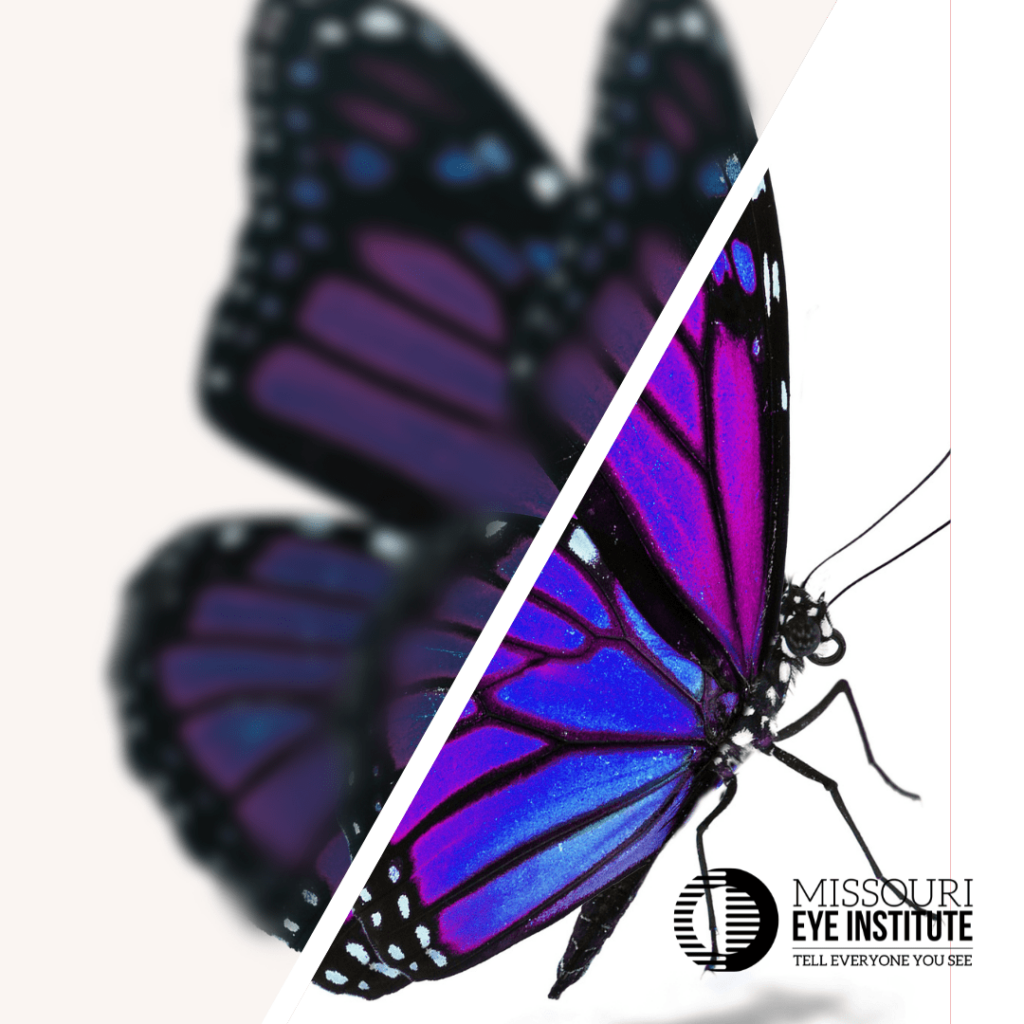
Posted by: Missouri Eye Institute in Blog on June 14, 2023

Cataracts are so common in the United States that half of people over the age of 75 can expect to have noticeable symptoms. In fact, there are about 25 million people with cataracts right now.
When a cataract begins to cloud the cornea of one or both eyes, it may not be readily apparent. First, cataracts progress very slowly over the course of decades, so you may not experience symptoms in the early stages. Even then, seemingly ordinary visual disturbances such as blurriness can get dismissed as a refractive error, dry eyes, or outdated glasses or contacts prescriptions.
In recognition of Cataract Awareness Month (June), here are four factors to consider to help you determine whether you might have cataracts.
Cataracts happen to everyone eventually. On average, the clouding of the cornea begins after the age of 40 and can take many years to become symptomatic. However, your ophthalmologist can identify cataracts in the early stages during an eye examination. The doctor can recommend permanent vision correction that would address both cataracts and existing refractive errors, where appropriate.
As cataracts worsen, that increased cloudiness can “wash out” your color vision. Bright colors may fade, and you may have trouble distinguishing some colors from one another (green, purple, blue, brown, and black in particular). For many, the first sign is difficulty reading light-colored text on dark backgrounds, or whites that take on a yellow tint.
Cataracts disrupt light entering the cornea and prevent it from focusing sharply on the retina, leading to the signature blurriness. Cataracts can also affect how your eyes perceive the light itself. The condition can cause oversensitivity to bright lights, as well as starbursts and halos surrounding street lamps at night.
Fully developed cataracts eventually become visible without the aid of an ophthalmologist’s specialized diagnostic equipment. Advanced cataracts will show up as milky-gray pupils visible to the naked eye.
Cataracts are easily treatable.
If you are age 40 or older and experience one or more of these symptoms, consult with your eye doctor to determine if you have cataracts. The condition is one of the leading causes of preventable blindness in adults in the U.S., but it is also easy to treat through cataract removal surgery. You don’t have to wait for cataracts to negatively impact your eyesight before you act, either. Cataracts can often be removed at any stage of development.
If you choose, you can also have your surgeon correct nearsightedness, farsightedness, and other refractive errors in the same procedure. This is done by removing the cataracts and replacing them with a prescription implantable contact lens (IOL) personalized to each eye.
If you are age 40 or older and have noticed one or more cataract symptoms, schedule an eye exam. Your eye doctor can help you determine the best course of action to recover your vision.
Missouri Eye Institute has helped thousands of patients attain freedom from glasses and contact lenses. Contact us at (800) 383-3831 to schedule a thorough eye exam or visit MissouriEye.com to learn more about our services.
Springfield
1531 E Bradford Parkway Ste 100
Springfield, MO 65804
Branson
1000 James F. Epps Rd Ste 2
Branson, MO 65616
Joplin
4500 E 32nd St
Joplin, MO 64804